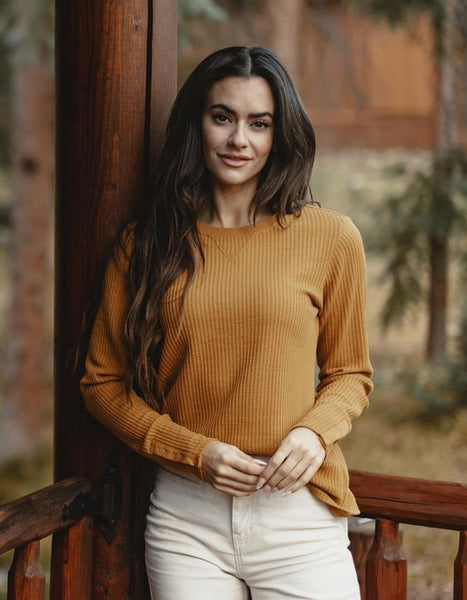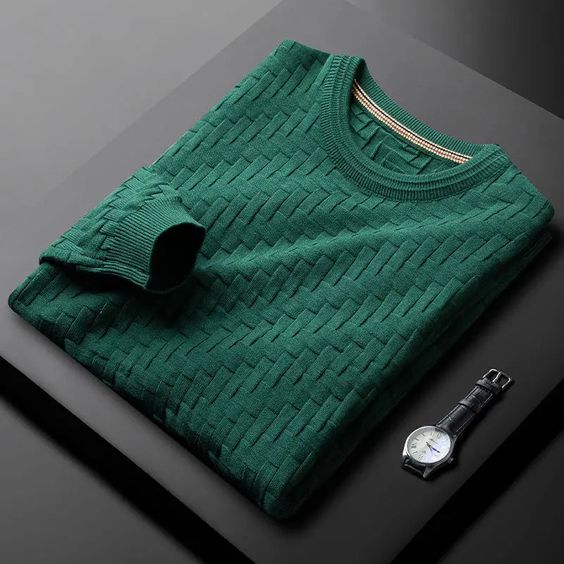What is Waffle Fabric?
Waffle fabric gets its name from its unique grid-like woven structure imitating the even raised square patterns on a breakfast waffle. Typically made from cotton yarns or cotton-polyester blends, small squares protrude, giving depth, absorbency and insulating warmth, mimicking terry cloth.
However, the woven construction makes waffle weave more durable than terry towels for frequent laundering. Its absorbent abilities, coupled with quick-drying properties, suit bathrobes, spa textiles and some apparel when a textured cloth-like handle is desired.
Historical Background of Waffle Fabric
The concept behind the distinguishing waffle weave structure traces back to traditional textiles made in the Middle East and Mediterranean regions centuries ago. Historic documents reference Turkish "havly" towels from the city of Havli adorned with decorative absorbing piles. These mentioned terry-like Havli weaves informed later American iterations, adjusting size, shape and fiber content to evolve into contemporary waffle fabrics mass-manufactured today.
The New Manchester Manufacturing Company, established in North Carolina in 1899, claims origins commercialising the waffle weave's functional application for modern tub bathing needs. They capitalised on consumer desire for plush, quick-drying, easy-care bath linens, upgrading from old, dangerous bath sheets.
Waffle weave afforded both cosy softness and utility, and it was soon adapted for bathrobes and blankets as well around the 1920s. As textile technology advanced, acrylic blends later joined softer natural fibers like cotton, bamboo, and eucalyptus to enhance performance qualities in waffle weave items, which increase today.

Types of Waffle Fabric
Waffle weave refers to a distinctive textile texture defined by protruding squares woven in relief, mimicking the peaks and valleys of a waffle. Let's understand what is waffle fabric used for and its different types. By adjusting the fiber content and blend ratios, Manufacturers can create different fabric weights and densities for various applications. Here are the various waffle fabric types:
- Cotton Waffle Weave - Made from 100% cotton; soft, breathable and absorbent, suited for apparel and home textiles
- Polyester Waffle Weave - Synthetic fibres add durability; common in outdoor furniture cushions
- Cotton/Poly Blend - Mixes natural softness with sturdiness; widely used quality option
- Thermal Waffle Fabric - Acrylic or wool content adds insulation for blankets and cold weather gear
- Large Waffle Weave - Exaggerated large grid pattern as a decorative furnishing textile
- Embossed Waffle - Fabric chemically treated with waffle texture through embossing rollers
- Honeycomb Waffle - More condensed structure with deeper dimensional honeycomb pattern
Uses of Waffle Fabric
The versatility of waffle weave allows it to serve both utility and fashion purposes. Its absorbency suits bathrobes and towels, while the texture adds visual interest to apparel like shirts, jackets and accessories.
Quilted waffles make warm bedding. The woven grid is durable to abrasion and has a cute aesthetic that works well for children's items. Waffle weave also functions great as fabric furniture coverings, from chair upholstery to curtains, and is capable of noise reduction.

Pros and Cons of Waffle Fabric
|
Pros |
Cons |
|
Absorbent - The woven 3D grid structure increases surface area enabling waffle fabric to readily absorb and disperse moisture, ideal for bath textiles. |
Heavier weight - The double-layered dense weave makes most waffle fabric heavier and thicker than plain cotton woven cloth. |
|
Quick-drying - The cubic volume within the waffle weave helps moisture evaporate rapidly keeping the fabric dry against skin. |
Tendency to snag - Exposed raised edges of the waffle peaks can get caught on sharp surfaces or jewellery causing pulls/pilling. |
|
Insulating - The air trapped within the waffle quilt pattern helps retain body heat supporting warmth in apparel and blankets. |
Not fully lint-free - Short floating cotton fibres may come off during harsh machine washing. |
|
Durable construction - Firm tightly woven interlacing resists stretching, withstands regular laundering and wearing better than towel terry cloth. |
Labour intensive production - Skilled operation is required for precise diagonal alignment weaving the waffle structure pattern. |
|
Decorative texture - Its charming visible grid design works beautifully for accenting bath essentials, nursery beddings and kids apparel incorporating on-trend visual tactility. |
Limited stretch - Like most woven fabrics, waffle weave generally lacks give compared to knits, affecting garment fitting. |
|
Versatile - At home in both utilitarian and fashion spheres suits waffle for bathrobes, upholstery, accessories, outdoor gear among broad product applications. |
Spot cleaning only - The textured surface is prone to retaining spills and stains that may prove challenging to remove given its blended fibres. |
Care and Maintenance Tips for Waffle Fabric
Taking proper care of waffle fabric helps retain its charming texture and utility over numerous laundering cycles. Follow these tips for keeping 100% cotton or poly-cotton blend waffle items looking their best:
- Check fabric care labels and abide by recommended washing methods for cotton, synthetic or blend fiber contents.
- Machine wash in cold water on a gentle cycle setting to minimise agitation damage
- Line dry away from direct sun exposure or machine tumble dry waffle items on a low heat setting if labelled safe to prevent excessive shrinkage.
- Remove from the dryer slightly damp and fold flat to allow weave to settle, reducing overall wrinkling.

- Lightly press with medium iron if needed, but don't overly flatten the distinctive raised waffle peaks.
- Protect textured waffle fabric from snags when possible to avoid pulls and pilling.
- Treat spills and stains promptly using a damp sponge and mild detergent, and avoid over-saturating
- Hand wash uniquely coloured or embellished designer waffle fabrics to prevent dye bleeding issues.
Conclusion
Waffle weave fabric delivers the cosy functionality of terrycloth, while its woven structure offers far more versatility beyond just towels. Absorbent, quick-drying, decorative and durably constructed waffle weave suits bath textiles along with apparel and accessories incorporation. The charming textile with visual depth and tactile interest continues gaining fans. As sustainable fibers improve their eco-profile, waffle weave satisfies market demand for performance fabrics fused with trendy embellished textures. Renewed artisanal attention through brands combining heritage techniques with contemporary applications forecasts a strong future for the perennial favourite waffle cloth.
Frequently Asked Questions on Waffle Fabric
1. Is waffle fabric environmentally friendly?
Ans: It depends on fiber content. Organic cotton or bamboo viscose waffle weaves made through eco-conscious production with non-toxic dyes and chemicals qualify as sustainable fabrics. Some brands offer recycled polyester waffles, which lowers environmental impact, too, versus virgin synthetics.
2. Is waffle fabric suitable for all seasons?
Ans: The woven grid's insulating air pockets provide warmth well-suited for cold seasons once lined for outerwear or weighted for winter bedding. Lightweight versions work for temperate or warm weather, especially if moisture is wicking. Overall, waffle weave's seasonal versatility suits year-round use.
3. Can waffle fabric shrink after washing?
Ans: Pre-shrunk cotton waffles shouldn't shrink excessively if the machine dried properly at low temp. Occasional minor shrinkage, though, may relax grids slightly. Poly-cotton blends risk more shrinkage through heat exposure during home laundering.
4. Does waffle fabric require ironing?
Ans: Ironing helps reset any wrinkles that settle within the woven depressions. But waffles' durable construction meant to withstand use may limit required flat pressing compared to dressier fabrics. Light steaming while smoothing may suffice minimally.
 Call Us
Call Us

